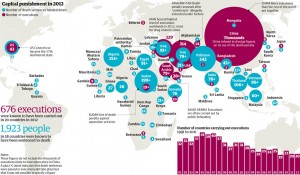
Despite becoming more unpopular in many other nations, it appears as though the death penalty is alive and well in the United States. During the recent election, voters in California, Nebraska, and Oklahoma called upon their governments to strengthen the death penalty. California rejected replacing executions with life sentences and shortened the legal process for executions. Nebraska revoked its 2015 ban on capital punishment, and Oklahoma voters motioned to include it within the state constitution.
In an article with Public Radio International, sociologist Susan Sharp from the University of Oklahoma explains why support for capital punishment is so robust in the United States and not elsewhere. According to Sharp, the U. S. embraces individualism, which allows citizens to ignore the social determinants of crime and perpetuates a “lock em’ up and throw away the key attitude.” Sharp states,
“We don’t look at social conditions and how those impact crime and criminal behavior. If you look at European countries, where there is no death penalty, they also have social service programs far superior to anything we have in this country. They don’t condemn people for needing assistance.”


